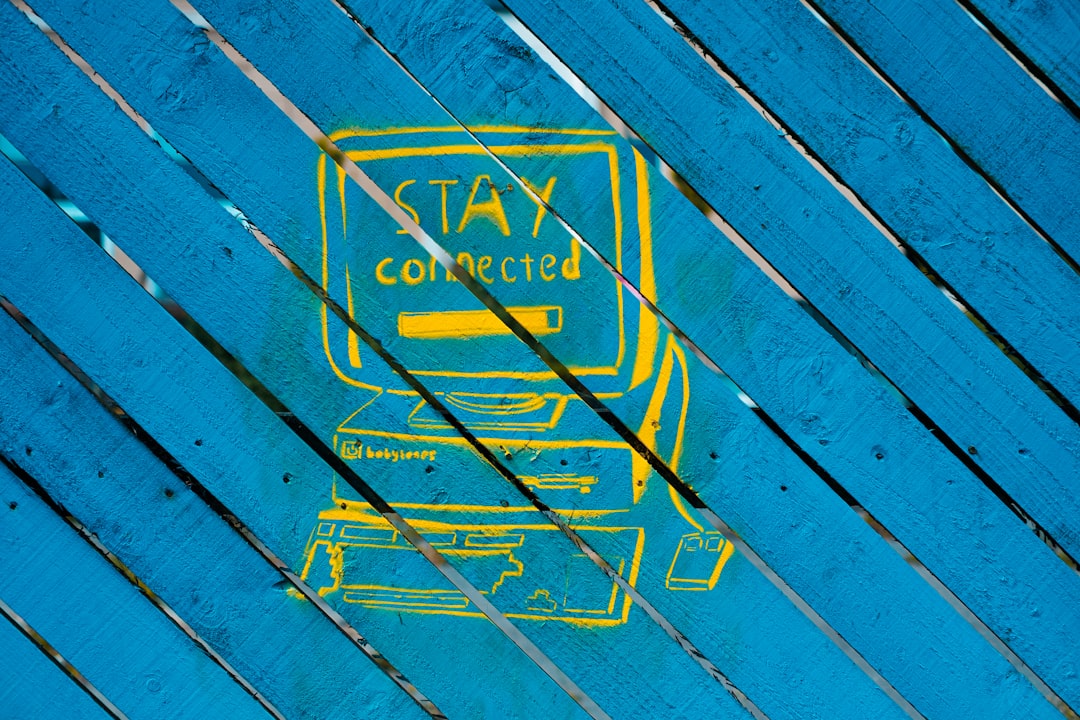The world has changed significantly since the COVID-19 outbreak. Businesses have migrated to remote work set-ups, schools have switched to online learning, and people have become more reliant on digital technology for communication, entertainment and even for their basic needs. This change has caused a significant shift in the way we live and work. It has also created new challenges and opportunities for people, especially for those who need to navigate the digital landscape in their daily work.
The introduction of the “new normal” has forced individuals and organizations alike to adopt digital tools, and to adapt quickly to new workflows in order to keep up with the fast-changing times. This shift has highlighted the importance of resilience and adaptability, as well as the need for new skills that are essential in navigating the digital challenges that come with the new normal.
In this post, we’ll explore the different aspects of adapting to the new normal in the digital age. We’ll discuss how emotional intelligence lights the way, how masterful control over tech tools is essential for success, and the importance of cultivating innovation and creativity for solving complex problems. We’ll also highlight the significance of networking and collaboration, and offer advice on striking a balance between digital overload and prioritizing self-care. By the end of this post, we hope to provide readers with actionable advice on how to embrace the digital future with confidence and agility in the ever-changing world.
Building Resilience: The Role of Emotional Intelligence in Navigating Digital Challenges
In this fast-paced digital world that we live in, the ability to adapt and thrive in change has become a critical skill. The COVID-19 pandemic has forced many of us to rapidly shift our work habits, from working in traditional office spaces to working from home or remote locations. This has presented us with numerous digital challenges to navigate, such as mastering new technology tools, staying connected with our colleagues, and managing digital overload.
Building resilience is the key to effectively handling these challenges. One of the most important skills to develop resilience is emotional intelligence (EQ). EQ is the ability to understand and manage one’s own emotions and the emotions of others. It is a critical skill in navigating the challenges that come with digital technology, especially when communicating virtually.
When we interact with others online or via technology, we lose many of the visual and auditory cues that we rely on to understand emotions. This can lead to misunderstandings and miscommunications, which can affect productivity and team cohesion. Developing emotional intelligence can help us better understand our own emotions and those of others, and it helps us communicate more effectively and productively.
As we navigate digital challenges, like remote work or virtual collaboration, we need to be able to communicate clearly and concisely. We cannot afford to be misunderstood or waste time clarifying details. By developing emotional intelligence, we can better anticipate how people will respond to our messages and approach our communication with empathy and understanding.
In conclusion, building resilience is critical to successfully navigate the digital challenges of our new normal. Developing emotional intelligence is an essential part of building personal resilience and cultivating team productivity. EQ helps us communicate more effectively, understand our emotions and those of others, and adapt with agility to changing circumstances. With these skills, we can confidently face the future and embrace the digital world that lies ahead.
As we navigate digital challenges, like remote work or virtual collaboration, we need to be able to communicate clearly and concisely.
Mastering Tech Tools: Developing Fundamental Skills to Thrive in a Digital World
As we continue to adapt to the new normal of remote work and digital communication, mastering tech tools has become an essential skill for professionals across industries. Whether you’re a seasoned pro or a beginner, developing fundamental skills in technology can help you thrive in a digital world.
First and foremost, it’s important to stay up-to-date with the latest apps and software. There are countless tools available to help streamline workflows, enhance productivity, and improve communication. From project management platforms like Asana and Trello, to presentation software like Prezi and Canva, there’s no shortage of options to choose from. By taking the time to research and experiment with new tools, you can find the ones that work best for your specific needs and preferences.
In addition to software, mastering hardware is also important. With so many different devices available, it’s crucial to know how to use them effectively. This includes everything from laptops and smartphones, to printers and scanners. Understanding how to troubleshoot common issues, maintain devices, and protect against cybersecurity threats can go a long way in ensuring that you’re able to stay productive and efficient in a digital environment.
Of course, mastering tech tools isn’t just about using them, it’s also about understanding how they work. This means taking the time to learn the basics of coding and programming, as well as the principles of design and user experience. By having a solid foundation in these areas, you can develop more meaningful and effective digital products.
Finally, don’t forget about the power of soft skills when it comes to tech tools. Strong communication, organizational, and problem-solving abilities can help you excel in any digital environment. By combining these skills with a willingness to learn and adapt, you can stay ahead of the curve and thrive in the ever-changing world of technology.
In conclusion, mastering tech tools is crucial for success in the digital world. By staying up-to-date with the latest software and hardware, as well as developing a foundation in coding, design, and soft skills, you can thrive in any digital environment. So whether you’re a seasoned pro or a beginner, take the time to invest in yourself and your technology skills – it’s an investment that will pay off for years to come.
This includes everything from laptops and smartphones, to printers and scanners.
Cultivating Creativity: Harnessing the Power of Innovation to Solve Complex Problems
As we navigate the new normal of the digital age, it’s no secret that we’re facing increasingly complex challenges. Whether it’s adapting to a remote work environment, staying ahead of technological advancements, or managing digital overload, the pressures are mounting. In order to thrive in this fast-paced and ever-changing landscape, cultivating creativity is essential.
But what exactly is creativity, and how can we harness its power to solve complex problems? At its core, creativity is the ability to generate new ideas, perspectives, and solutions. It’s about breaking free from conventional thinking and approaching problems from new angles. And in today’s digital age, where innovation and adaptation are key, creativity has become a vital skill for success.
One way to cultivate creativity is through collaboration. Working with others can spark new ideas and perspectives, providing a wealth of resources to draw from. And with the rise of remote work and virtual collaboration tools, it’s easier than ever to connect with people from all over the world, offering a diverse range of perspectives and ideas.
Another way to foster creativity is by embracing experimentation. Taking risks and trying new things can lead to breakthroughs and new discoveries. This can involve experimenting with new technologies or trying out new approaches to problem-solving.
Of course, creativity can be easier said than done. It takes time, effort, and patience to truly hone this skill. But by embracing a growth mindset and being open to new ideas and perspectives, we can unleash our creative potential and tap into the power of innovation to solve even the most complex problems.
In summary, cultivating creativity is a key component of adapting to the new normal of the digital age. It involves embracing collaboration, experimentation, and a growth mindset to generate new ideas, perspectives, and solutions. With these tools at our disposal, we can tackle even the most complex challenges with confidence and agility.
Whether it’s adapting to a remote work environment, staying ahead of technological advancements, or managing digital overload, the pressures are mounting.
Staying Connected: The Importance of Networking and Collaboration in a Remote Work Environment
The remote work trend has necessitated the need for networking and collaboration in new ways. It has become increasingly important to seek out and maintain meaningful connections in a virtual workspace.
One major advantage of remote work is that it allows for a more diverse pool of talent, making it easier to work with people from all over the world. However, it also means that team members might never meet in person, which can be isolating, alienating, and lead to miscommunication.
To combat this, it is essential to build strong and reliable networks that not only increase productivity but also act as sources of support and motivation. This means investing time in getting to know colleagues, peers, and industry professionals. Staying connected with people in your network through video calls, social media, and instant messaging apps can also help avoid feeling disconnected from the workplace.
Collaboration is also key to success in a remote work environment. To foster productive and efficient collaboration between team members, it is important to establish clear communication channels and to use collaboration tools effectively. Encouraging frequent team meetings, brainstorming sessions, and giving everyone a chance to contribute ideas can help to create an atmosphere of trust and creativity.
Virtual conferences, workshops, and webinars are other ways to expand your professional network and stay in touch with others in your industry. Networking online can help you meet new people, learn new skills, and discover exciting opportunities.
In conclusion, the importance of networking and collaboration in a remote work environment cannot be overstated. Staying connected with colleagues and peers through various communication channels helps to build trust, enhance productivity, and foster creativity. By developing a supportive network and embracing collaborative tools and practices, you can thrive in the digital age and reach your full potential.
However, it also means that team members might never meet in person, which can be isolating, alienating, and lead to miscommunication.
Striking a Balance: Managing Digital Overload and Prioritizing Self-Care
In the digital age, it can be challenging to find the right balance between work and personal life. There is a constant barrage of emails, messages, notifications, and updates that demand our attention. With remote work becoming the new norm, the boundary between work and home has become blurred, making it even more challenging to disconnect and recharge.
Digital overload can lead to stress, burnout, and overall decreased well-being. Therefore, it’s crucial to develop strategies to manage digital overload and prioritize self-care.
One way to strike a balance is by setting boundaries. Establishing clear work hours, turning off notifications outside of work hours, and taking breaks throughout the day can help create a sense of structure and routine. It’s also essential to communicate these boundaries with colleagues and clients to avoid unrealistic expectations.
In addition to setting boundaries, it’s crucial to prioritize self-care. Taking care of physical, mental, and emotional health should not be neglected, even when working from home. Regular exercise, mindfulness practices, and social connections can help alleviate stress and promote overall well-being.
Another strategy for managing digital overload is to simplify and streamline work processes. Utilizing tech tools to automate repetitive tasks and streamline workflows can help optimize productivity and minimize time spent on trivial tasks.
Overall, striking a balance between digital work and personal life requires intentionality and self-awareness. With the right strategies and tools, it is possible to thrive in a digital world without sacrificing personal well-being.
There is a constant barrage of emails, messages, notifications, and updates that demand our attention.
Conclusion: Embracing the Digital Future with Confidence and Agility
As we wrap up this comprehensive guide on adapting to the new normal, we hope that you have gained valuable insights on how to navigate digital challenges, master tech tools, foster creative thinking, stay connected, manage digital overload, and prioritize self-care.
The COVID-19 pandemic has accelerated the pace of digital transformation, forcing many businesses and individuals to pivot and embrace a remote work environment. While this shift may seem daunting at first, it also presents an opportunity to explore new ways of working, learning, and collaborating.
At the heart of this digital revolution is the need for resilience and emotional intelligence. By developing these skills, we can effectively manage the stress and uncertainty that come with change, adapt to new technologies, and build meaningful relationships in a virtual world.
Moreover, we must recognize that the digital world is constantly evolving and that we must continuously learn and upskill to stay relevant. Whether it’s learning a new software program or attending online courses, we must be willing to embrace lifelong learning to remain competitive in the ever-changing job market.
Finally, we need to find a balance between our digital lives and our personal well-being. While technology has undoubtedly enhanced our lives, it has also created new sources of stress and distraction. By setting boundaries, unplugging from technology, and prioritizing self-care, we can maintain our physical and mental health and improve our overall quality of life.
In conclusion, the digital future is here to stay, and it’s up to us to embrace it with confidence and agility. By cultivating resilience, mastering tech tools, fostering creativity, staying connected, managing digital overload, and prioritizing self-care, we can thrive in the age of digital transformation. Let’s embrace this new normal and see where it takes us!





